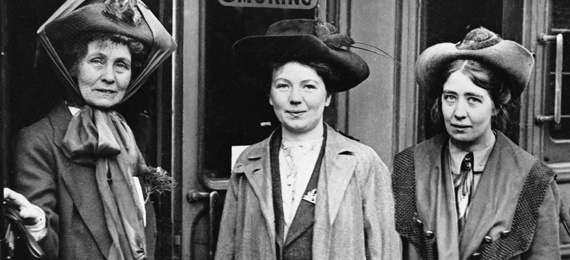
Who are the suffragettes and suffragists? Why did the women’s suffrage movement last for 100 years? Remember the history and challenges women faced in gaining voting rights.
The first-ever suffragette organization was a militant group started by the Pankhurst family called The Women’s Social and Political Union (WSPU) in the U.K. on 10th October 1907 and was disbanded in 1918.
On the other hand, Millicent Garrett Fawcett started a 50,000-suffragist organization that believed in peaceful protests in the U.K. and succeeded in its motives.
Where Did the Suffrage Movement Begin in the U.S.?
- A. Washington
- B. California
- C. New York
- D. Texas
How Did American Women Win the Fight for Suffrage?
Though the suffragists of the U.S. initially fought for the right to own property, they later evolved into a women’s rights movement. Here is the women’s suffrage timeline:
| 1848 | Lucretia Mott and Elizabeth Cady Stanton started the National Union of Women’s Suffragist Societies (NUWSS) on the 13th of July 1848. This society immediately increased with 32 male and 68 female members. |
| 1848 | They signed a “Declaration of Sentiments” with 12 resolutions for equality. |
| 1849 | The First National Women’s Rights Convention addresses the fight for women’s suffrage. |
| 1861-1865 | Civil War halts the women’s suffrage movement. |
| 1866 | American Equal Rights Association was formed. |
| 1868 | The suffragists split into 2 each led by Susan B. Anthony and Elizabeth C. Stanton. |
| 1871 | Victoria Woodhull represented the NUWSS in the U.S. House after the 14th and 15th were ratified. The anti-suffragists party was formed with powerful men and women. |
| 1872 | Susan B. Anthony is arrested for voting. |
| 1876 | “Declaration of Rights for Women” is presented. |
| 1877 | California accepts the suffragists. |
| 1890 | NUWSS evolves into National American Women Suffrage Association (NAWSA). |
| 1896 | National Association for Colored Women is formed. |
| 1912 | TR’s Bull Moose party supports NAWSA. |
| 1913 | NAWSA parades in Washington and forms a congressional union to voice women’s right to vote. |
| 1915 | A transcontinental tour is organized to gain favoring petitions. |
| 1916 | Alice Paul renamed the congressional union the National Women’s Party (NWP). |
| 1916 | Jeanette Rankin of Montana is the first elected representative. The democratic party supports the NWP. |
| 1917 | WW1 begins, hunger strikes happen. |
| 1919 | WW1 ends, the 19th amendment sets into congress. |
| 1920 | The law is passed and NAWSA disbands. |